A rail line linking the south of the country with the north has been somewhat of a pipedream for the past decade. But with a federal government commitment of $9.3 billion, the once-in-a-generation Inland Rail network between Melbourne and Brisbane is expected to have the first train operating along its tracks in just over six years, by 2024-25.
The largest freight rail infrastructure project in Australia, it aims to reduce the number of trucks on roads and more efficiently connect regional Australia to global markets. The 1,700km route via regional Victoria, NSW and Queensland will use the existing line, with upgrades, from Melbourne to Illabo in southern NSW. A combination of new and upgraded tracks will then be used via Parkes, Moree, Toowoomba and Calvert to reach the existing interstate line at Kagaru and then to Acacia Ridge and Bromelton, south of Brisbane.
The government-owned
Australian Rail Track Corporation (ARTC), which is delivering Inland Rail in partnership with the private sector, has divided the route into 13 separate projects, with seven of those in NSW. Duncan Mitchell, ARTC’s state manager for NSW, says all projects have completed the concept phase and are at either the feasibility or detailed design stage. Work has begun between Parkes and Narromine with six bridge upgrades, and construction will start on upgrades to that section of the line later this year.
The ARTC track will enable the use of double-stacked, 1,800m-long trains travelling at a maximum speed of 115km per hour. Each train will be able to carry the equivalent freight volume of 110 B-double trucks. According to ARTC stakeholder engagement manager Helena Orel, Australia’s growing population and the increasing demand on goods and services means the current trucking and freight industry isn’t sustainable in the long term. There needs to be “another spine of rail” to move goods quickly and efficiently, she says.
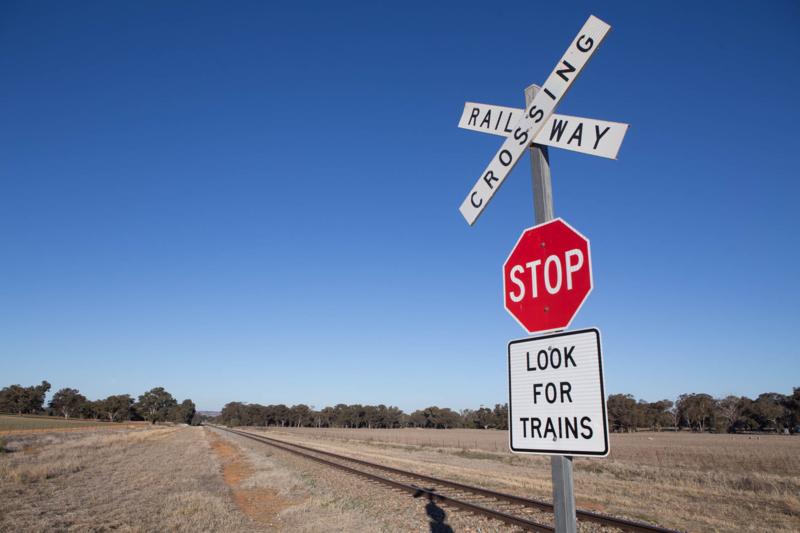
While the project is generally supported, affected farmers and NSW communities say ARTC is yet to give them satisfactory answers to a number of questions. NSW Farmers’ policy director – cropping and horticulture Robert Hardie says the Association supports a freight line linking Melbourne and Brisbane, but a key concern is understanding how the route was selected. The 37km section from Illabo to Stockinbingal in southern NSW and the 307km section from Narromine to Narrabri in the north will be built new.
“The frustration is between Narromine and Narrabri where the Inland Rail is bypassing the existing rail corridor,” says Robert.
“Back in 2010, when they were looking at options to complete this link, there were numerous options and configurations. But in 2016, ARTC narrowed it down to the preferred corridor, which bypasses Coonamble and will go through 300 properties. Landowners have been left wondering why, when there is a perfectly good rail corridor that could be used.”
ENGAGED COMMUNITIES STAND THEIR GROUND
ARTC says it has chosen the route because it is aiming for a total service running time of 24 hours, and the option via Coonamble adds time. It adds that the rail line needs to be more cost-effective than other freight options, such as trucks, in order to compete. However, NSW Farmers believes that missing Coonamble will only save four minutes.
The Association has been holding community meetings across impacted areas, and Robert says the number of people turning up shows how engaged communities are. In Cootamundra, 40 landholders and locals attended, even though only 30 landholders are affected.
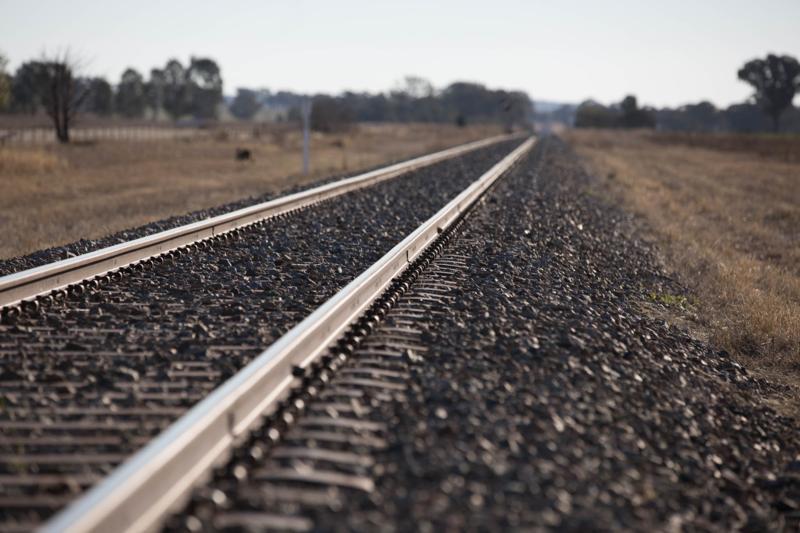
Landholders around Narromine, Curban and Eumungerie have also raised concerns about the new route chosen and the width of the proposed rail corridor. Robert says the width between Narromine and Curban has changed from 2km to 5km, and the route has moved from being west of Narromine to east of the town.
“Landholders on the east of Narromine thought the railway would bypass them, but have since found it is going to go through their properties,” he says.
WHERE ARE THE ANSWERS FOR LAND OWNERS?
Another issue is the new land access agreement negotiated between NSW Farmers and ARTC. The agreement limits landowners’ liability in the event of accidents during ARTC work on their properties, and means information gathered by ARTC can only be used for the Inland Rail project.
Robert says every individual landowner will be approached by ARTC to seek permission for access, and while they are under “no obligation” to sign the access agreement, landowners who engage can help inform the outcome.
“As a whole, people are supportive of the Inland Rail,” says Robert. “They are just asking ‘why here?’ and ‘why me?’ and are frustrated that they’re not being given answers.”
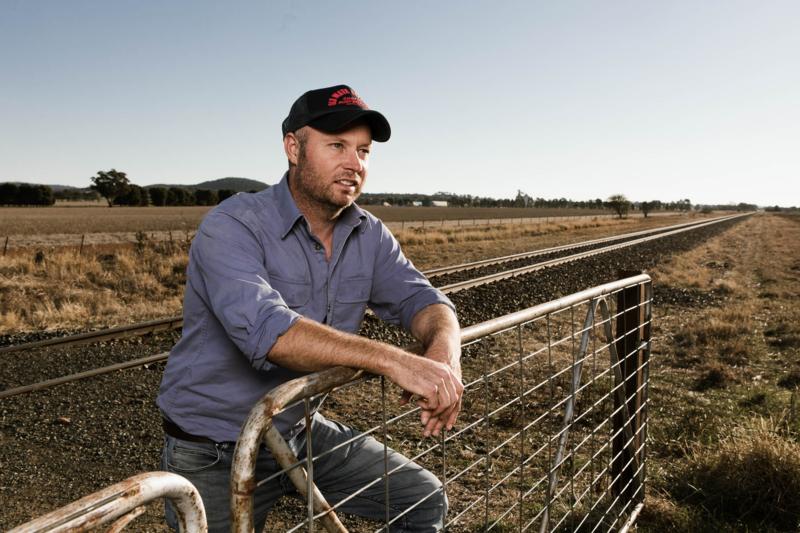 Tim Berryman at his property in Stockinbingal in the Riverina.
Tim Berryman at his property in Stockinbingal in the Riverina.
Helena Orel says ARTC understands there are issues with laying rail line through farmers’ properties and it’s working through them with landowners one-on-one. “It’s a slow process because it has to be done properly, but all of the feedback goes back into the detailed design,” she says.
A 2km-wide study corridor is still being looked at in the two NSW sections where new track will be built. But as information is gathered through hydrological testing and feedback provided by landowners, the corridor will be narrowed down to 40-60m. In some areas, says Helena, they are still 12 to 18 months away from narrowing down the corridor.
“I appreciate that it’s frustrating. It’s not until we know where that narrow rail corridor will be that we’ll have many of the answers farmers have been asking for,” she says.
Andrew Peart from Armatree says the proposed Inland Rail route between Narromine and Narrabri will split his 1,027-hectare property in two. Andrew and his wife, Jodie, grow wheat, lupins, canola and chickpeas across six properties in the area.
“The route means there will be about 650ha on one side of the tracks and the remainder on the other, and it’ll be about 600m from my house and 800m to another house,” says the farmer.
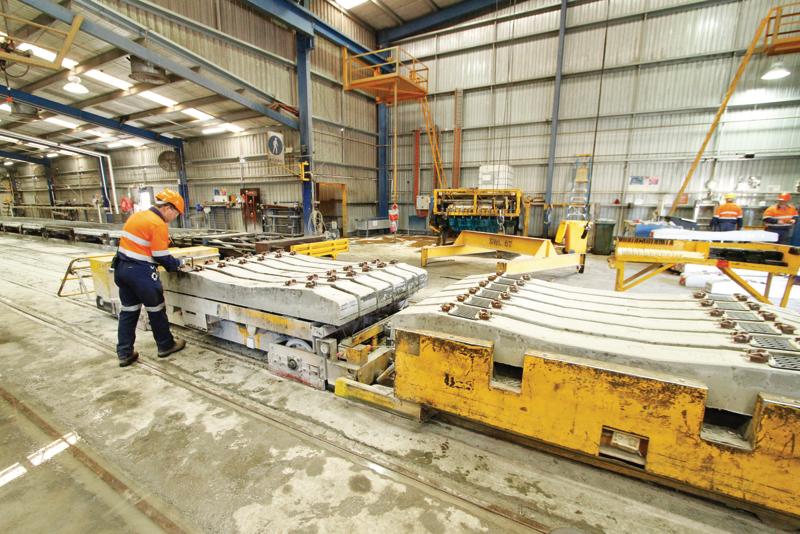 Finishing touches are put on Inland Rail concrete sleepers at Rocla’s Braemar plant near Mittagong, NSW. The plant will supply 200,000 sleepers for the first stage of the project in NSW.
Finishing touches are put on Inland Rail concrete sleepers at Rocla’s Braemar plant near Mittagong, NSW. The plant will supply 200,000 sleepers for the first stage of the project in NSW.
While Andrew believes the Inland Rail is “a good thing”, he wants ARTC to ensure it gets the route right, to use existing rail corridors and to minimise the impact on prime farming country. He says access to his property is a concern, as access is needed to both sides of the rail line. The proposed route also runs across a natural watercourse, which has to be taken into account. Noise and safety need to be considered, too.
“We have four kids between two and seven years old, the line is 600m from the house and, at the moment, I don’t have confidence that they will be safe,” says Andrew, who wants ARTC to give them “some answers” and limit the impact.
“This affects a lot of people and as soon as someone pushes back it will go onto someone else’s property. The whole thing just has to be done properly.”
Meanwhile, there’s a “perfectly good grain hub at Coonamble”, says grain farmer Adrian Lyons, who, along with many other locals, can’t fathom why the preferred Inland Rail route skips the town. He says ARTC hasn’t given them any satisfactory answers on why Coonamble is being excluded from the new route.
“They haven’t considered the social or economic impact on the community,” he says. “In 2016, Coonamble took 550,000 tonnes of grain and it was the biggest grain receival site in Australia that year.”
Adrian is worried the community won’t get answers because the timeline for building the railway is tightening. “The emotional impact of the unknown over the past two years has been huge and no-one else was representing us, so NSW Farmers stepped up.”
While critical of ARTC’s community engagement to date, Adrian says the new CEO, Richard Wankmuller, is taking steps to rectify it. “People aren’t stupid here, but they’ve been treated stupidly. If they can give us reasons and evidence for the social and economic impacts of the route selection, then we would accept it,” he says. Like most farmers, Adrian wants the Inland Rail to happen, “providing I can get my grain on the trains” – and evidence supporting the preferred route is forthcoming.
Tim Berryman from Stockinbingal in the Riverina already has a rail line running east to west on his land and the proposed Inland Rail route will join it somewhere on his property.
“The fourth generation of our family is on this farm, so our business and our life have been here for a long time. Where the Inland Rail goes will impact on the size of our property, which could mean the end of our farm,” he says. “There’s been a lot of frustration because there is so much at stake – but no information up to this point.”
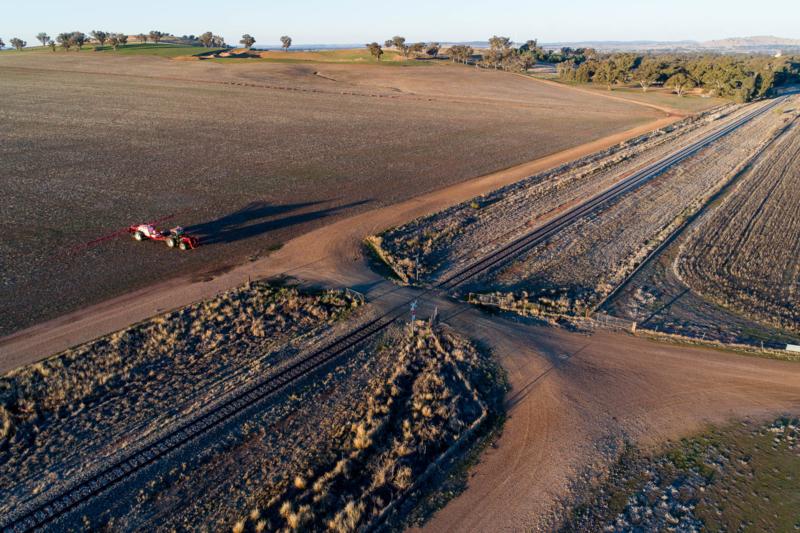 Tim Berryman says the existing rail line that dissects his property causes difficulties in moving stock, and even slow-moving trains disturb the sheep. He wants answers about where the Inland Rail will cross his land.
Tim Berryman says the existing rail line that dissects his property causes difficulties in moving stock, and even slow-moving trains disturb the sheep. He wants answers about where the Inland Rail will cross his land.
The crop and sheep farmer says it’s hard to plan when things are so uncertain. “The current rail line has been here forever, so the paddocks were built around it. But moving stock from one side to the other is difficult; there are weeds and pests and although the trains are slow-moving, they disturb the sheep.”
Tim says the Inland Rail is beneficial to the country, but at this stage he can’t see a benefit for the town. “For it to benefit a lot of farmers, there has to be access for us to get our goods on the line.” Duncan Mitchell says ARTC is looking at where sidings will go so farmers can load grain onto trains.
Deputy Prime Minister Michael McCormack met with NSW Farmers members and Parkes MP Mark Coulton at the end of June, and agreed to provide documentation about the Inland Rail route selection to address landholders’ concerns. A spokesperson for the Deputy Prime Minister says the discussions were “passionate, robust and productive”.
NSW Farmers members agreed to provide a list of questions from the meeting to the Department of Transport and Infrastructure to be answered in conjunction with ARTC. The spokesperson says the response to stakeholders will include details of the economic analysis underpinning the chosen route.
INLAND RAIL FAST FACTS
The total distance
1,700km
Australian Government funding
$9.3 billion
Jobs during construction
16,000
Permanent jobs created
700
Increase in gross domestic product
$16 billion
Use of existing infrastructure
70%
Source:
Australian Rail Track Corporation